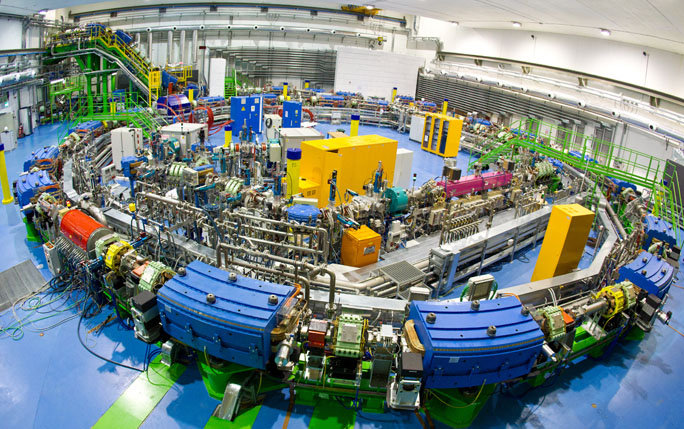EU funds project on heavy ion therapy coordinated by CNAO

OMA partner CNAO (Centro Nazionale di Adroterapia Oncologica, Italy) will lead the HITRIPlus (Heavy Ion Therapy Research Integration Plus) project funded by the European Union under Horizon 2020 to promote the creation of a network of collaboration between European centres using carbon ion beams.
The network will allow the use of these particles for research purposes, to open the centers to clinical researchers and operators interested in developing new technologies, involving companies.CNAO is one of the four centers in Europe to have a particle accelerator capable of generating beams of carbon ions for the treatment of solid tumors and for experiments in the technological field. The project has a total value of 5 million euros and brings together 22 universities and research centers from 14 European countries. CNAO will lead the project which involves realities such as CERN in Geneva, the National Institute of Nuclear Physics (INFN), the other three European centers with carbon ion accelerators (MIT in Marburg and HIT in Heidelberg in Germany and Medaustron in Austria ), the Commissariat for Atomic Energy and Alternative Energy (CEA) in France, the Centro de Investigaciones Energéticas, Medioambientales y Tecnolocias (CIEMAT) in Spain.
The aim of the project, which will last 48 months, is to encourage research and technological development both in terms of applications of ions in the medical field, with the study of new components of ion accelerators, such as new sources, new linear accelerators and new systems dose distribution, and for industry with the development of new superconducting magnets (synchrotron carriers) more efficient and with lower production costs.
Sandro Rossi, director general of CNAO, underlines: "As project coordinator, CNAO will make the synchrotron available to European scientists and industries engaged in clinical and technological research, will provide them with advice on the use of ions, will participate in joint projects aimed at refinement and development of new technologies for the acceleration of ions, such as superconducting magnets and the accurate analysis of the radiobiological effects of these particles with the aim of making oncological therapies even more precise and effective ".
HITRIPlus wants to boost the spread of hadrontherapy in Europe, an advanced form of radiotherapy that uses heavy particles such as ions, more powerful and precise, to treat tumors resistant to traditional therapies or for tumours that are located in particularly difficult locations. Typically, hadrontherapy began its experience on tumours of the base of the skull where it is necessary to be extremely precise in the delivery of the treatment since around the tumour mass there are very important structures, nerves and vessels that cannot be damaged.
Unlike traditional radiotherapy based on X-rays or electrons, hadrontherapy involves the use of proton and carbon ions. These hadrons have the advantage of being heavier and having more energy than electrons and, consequently, of being even more effective in destroying cancer cells. In order to be effective in hitting the tumour with extreme precision, the hadrons used in the treatment of hadrontherapy must undergo a very powerful acceleration by means of a particle accelerator. Worldwide, only six facilities are capable of delivering protons and carbon ions hadrontherapy.
Many of our OMA partners, including CERN in Geneva, INFN in Italy, GSI in Germany, MedAustron in Austria and PSI in Switzerland, teamed up to make this possible, sharing their data and experiences to further study the radiobiological effects of ions, to refine the quality and efficacy of particle beams extracted from accelerators with the general objective of further improving their use in the clinical area.
Finally, the project will make available to the scientific community an innovative design of an accelerator that can be used in centers interested in introducing oncological hadrontherapy.